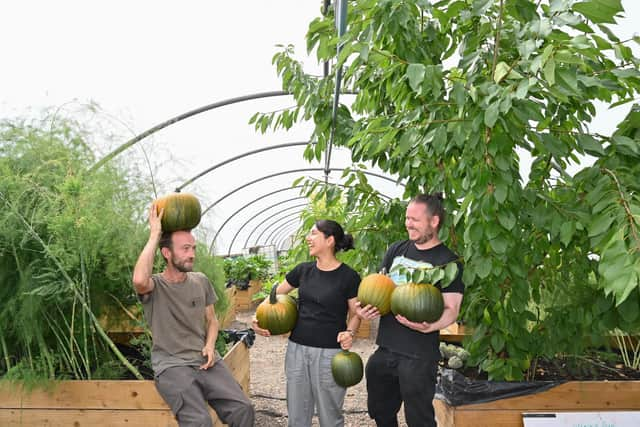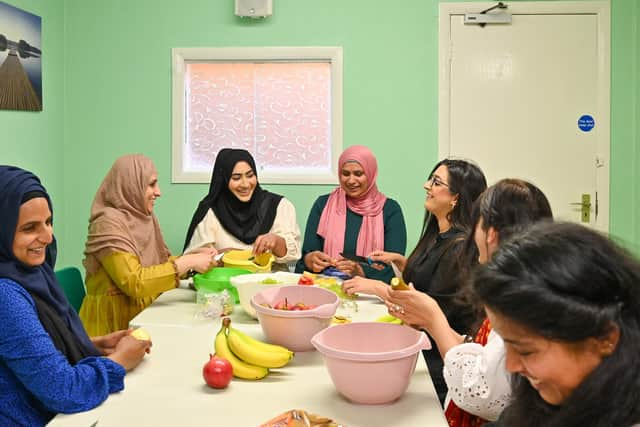Food futures dishes up success with projects
and live on Freeview channel 276
That’s according to an independent report commissioned to look at the success or otherwise of Falkirk Food Futures Programme.
The Biggar Economics report’s verdict was that the programme “helped organisations to lift their communities out of the pandemic and develop their skills and resources at a time of unprecedented national economic crisis”.
Advertisement
Hide AdAdvertisement
Hide AdThat was very welcome news for Forth Environment Link, which led a partnership with Falkirk Council, CVS Falkirk and NHS Forth Valley to coordinate 20 community organisations across the district.


Funding to make it all happen came from the UK Government’s Community Renewal Fund, which was designed to fund local projects that helped address local challenges and, the report says it did exactly that. With a budget of £534,000, the programme’s intention was to “improve physical and human capacity, develop skills, inspire behaviour change and renew communities”.
The projects involved around 16,400 participants and service users, who learned lots about improving food growing and community cooking facilities in particular as well as some digital skills.
Seventy per cent of the groups said the funding has allowed them to expand the scale of what they do and improve the quality of their services. Sixty-five per cent say it has improved the facilities they provide and enabled them to reach more marginal communities. Others said it help to boost volunteer numbers and for around one-third of the projects supported, it has enabled the organisation to continue.
Advertisement
Hide AdAdvertisement
Hide AdEmily Harvey, who led the project, said she was delighted and is confident that the project, while now completed, has left a strong legacy. She said: “It’s not the sort of money that comes around very often and we’ve had some really great examples of how organisations have used this money to deliver what they wanted.”


Emily has noticed the interest in growing food has been meteoric in the last couple of years. She says that firstly, “communities understand that people get a massive benefit from being out in nature, together, doing something constructive”.
And also, after the pandemic people have seen how erratic food chains can be and are keen to become more independent.
One of smaller grants went to the Rainbow Muslim Women’s Group, who delivered a project that Emily singled out as one of her favourites. “They wanted to deliver a range of things like cooking workshops, community meals and food festivals to educate people on what healthy, sustainable food is and also try and get people socialising again after the pandemic.
Advertisement
Hide AdAdvertisement
Hide Ad“What’s really nice is that they are like a force of nature – they started doing this and now they’re unstoppable and they’re cooking up a storm wherever they go. They’re fantastic – and the food’s amazing.”
Another favourite project is Sustainable Thinking Scotland, a social enterprise working in the former walled garden in Kinneil Estate. As well as growing lots of produce that goes to the food banks in the Bo’ness area, they also set up a ‘bio-char’ system that can make soil richer.
“The fund enabled them to get a couple of paid members of staff to help them develop further and to re-skin one of the polytunnels. They were also able to use our funding to get match-funding to employ another person and they’ve doubled the amount they are able to give to the food banks.
“They also provide learning experiences and open up the site to other community groups – I just think what they do is incredible! I can’t praise them enough – they make a massive difference to their community.”
Advertisement
Hide AdAdvertisement
Hide AdOther highlights included a new training kitchen for Forth Valley Sensory Centre, which makes it easier to use for people who are sight-impaired.
“There was quite a range of different projects. What’s also really good is that we’ve had volunteers that through these funded groups have gone on to further education. These are all things you can measure and it’s amazing to see the difference it’s actually making to people’s lives.”
Emily tells the story of one woman with early stage dementia who, before the pandemic, had been extremely isolated and rarely went out. When one of the groups funded by the project opened a cafe, she went along and “it totally changed her life”. “She’s now able to go out and feel connected – it’s lovely to hear stories like that,” said Emily.
She was also delighted to see the number of young people becoming ‘food ambassadors’.
Advertisement
Hide AdAdvertisement
Hide AdWith a very tight timescale to spend the money in, it was a challenge to get so many groups on board and having more time would have helped, Emily admits. But she is delighted at what they managed to achieve in such a short space of time.
They knew the money was needed as research commissioned by NHS Forth Valley, in 2021, had identified an urgent need for grant funding to deliver a food security programme across Forth Valley.
“The money helped people there and then. It’s helped to change people’s hearts, minds and behaviours there and then but I think we will see in successive years the output of that funding,” said Emily.
“I’m not saying they’ll all have a meteoric rise but the money has built in a massive confidence boost and also the partners – FEL, Falkirk Council, the NHS – have all deepened our relationships and that makes working together so much easier.
Advertisement
Hide AdAdvertisement
Hide Ad“The project was only successful because of everyone’s input – the partners, the community organisations, the individuals, the schools. They got behind it and they got out of it what they needed to.
“It’s been a fantastic experience.”